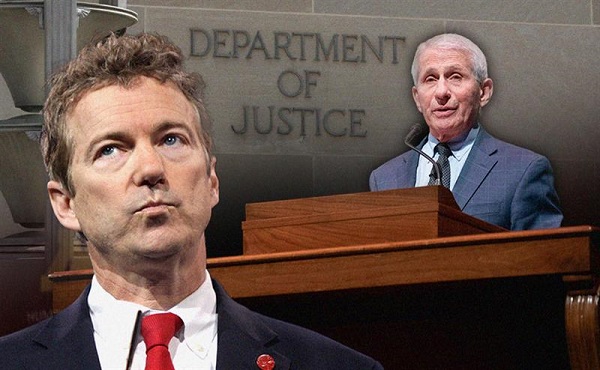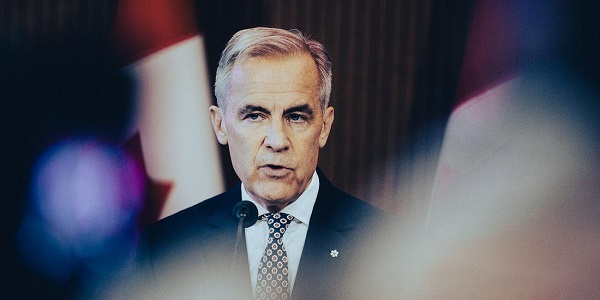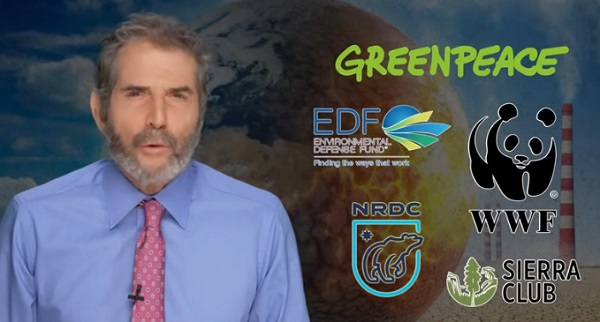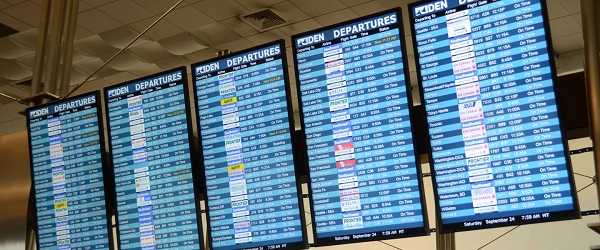Energy
Canada could have been an energy superpower. Instead we became a bystander

This article was originally published in a collected volume, Canada’s Governance Crisis, which outlines Canada’s policy paralysis across a wide range of government priorities. Read the full paper here.
From the MacDonald-Laurier Institute
By Heather Exner-Pirot
Government has imposed a series of regulatory burdens on the energy industry, creating confusion, inefficiency, and expense
Oil arguably remains the most important commodity in the world today. It paved the way for the industrialization and globalization trends of the post-World War II era, a period that saw the fastest human population growth and largest reduction in extreme poverty ever. Its energy density, transportability, storability, and availability have made oil the world’s greatest source of energy, used in every corner of the globe.
There are geopolitical implications inherent in a commodity of such significance and volume. The contemporary histories of Russia, Iran, Venezuela, Saudi Arabia, and Iraq are intertwined with their roles as major oil producers, roles that they have used to advance their (often illiberal) interests on the world stage. It is fair to ask why Canada has never seen fit to advance its own values and interests through its vast energy reserves. It is easy to conclude that its reluctance to do so has been a major policy failure.
Canada has been blessed with the world’s third largest reserves of oil, the vast majority of which are in the oil sands of northern Alberta, although there is ample conventional oil across Western Canada and offshore Newfoundland and Labrador as well. The oil sands contain 1.8 trillion barrels of oil, of which just under 10 percent, or 165 billion barrels, are technically and economically recoverable with today’s technology. Canada currently extracts over 1 billion barrels of that oil each year.
The technology necessary to turn the oil sands into bitumen that could then be exported profitably really took off in the early 2000s. Buoyed by optimism of its potential, then Prime Minister Stephen Harper pronounced in July 2006 that Canada would soon be an “energy superproducer.” A surge of investment came to the oil sands during the commodity supercycle of 2000-2014, which saw oil peak at a price of $147/barrel in 2008. For a few good years, average oil prices sat just below $100 a barrel. Alberta was booming until it crashed.
Two things happened that made Harper’s prediction fall apart. The first was the shale revolution – the combination of hydraulic fracturing and horizontal drilling that made oil from the vast shale reserves in the United States economical to recover. Until then, the US had been the world’s biggest energy importer. In 2008 it was producing just 5 million barrels of crude oil a day, and had to import 10 million barrels a day to meet its ravenous need. Shale changed that, and the US is now the world’s biggest oil producer, expecting to hit a production level of 12.4 million barrels a day in 2023.
For producers extracting oil from the oil sands, the shale revolution was a terrible outcome. Just as new major oil sands projects were coming online and were producing a couple of million barrels a day, our only oil customer was becoming energy self-sufficient.
Because the United States was such a reliable and thirsty oil consumer, it never made sense for Canada to export its oil to any other nation, and the country never built the pipeline or export terminal infrastructure to do so. Our southern neighbour wanted all we produced. But the cheap shale oil that flooded North America in the 2010s made that dependence a huge mistake as other markets would have proven to be more profitable.
If shale oil took a hatchet to the Canadian oil industry, the election of the Liberals in 2015 brought on its death by a thousand cuts. For the last eight years, federal policies have incrementally and cumulatively damaged the domestic oil and gas sector. With the benefit of hindsight in 2023, it is obvious that this has had major consequences for global energy security, as well as opportunity costs for Canadian foreign policy.
Once the shale revolution began in earnest, the urgency in the sector to be able to export oil to any other market than the United States led to proposals for the Northern Gateway, Energy East, and TMX pipelines. Opposition from Quebec and BC killed Energy East and Northern Gateway, respectively. The saga of TMX may finally end this year, as it is expected to go into service in late 2023, billions of dollars over cost and years overdue thanks to regulatory and jurisdictional hurdles.
Because Canada has been stuck selling all of its oil to the United States, it does so at a huge discount, known as a differential. That discount hit a staggering US$46 per barrel difference in October 2018, when WTI (West Texas Intermediate) oil was selling for $57 a barrel, but we could only get $11 for WCS (Western Canada Select). The lack of pipelines and the resulting differential created losses to the Canadian economy of $117 billion between 2011 and 2018, according to Frank McKenna, former Liberal New Brunswick Premier and Ambassador to the United States, and now Deputy Chairman of TD Bank.
The story is not dissimilar with liquefied natural gas (LNG). While both the United States and Canada had virtually no LNG export capacity in 2015, the United States has since grown to be the world’s biggest LNG exporter, helping Europe divest itself of its reliance on Russian gas and making tens of billions of dollars in the process. Canada still exports none, with regulatory uncertainty and slow timelines killing investor interest. In fact, the United States imports Canadian natural gas – which it buys for the lowest prices in the world due to that differential problem – and then resells it to our allies for a premium.
Canada’s inability to build pipelines and export capacity is a major problem on its own. But the federal government has also imposed a series of regulatory burdens and hurdles on the industry, one on top of the other, creating confusion, inefficiency, and expense. It has become known in Alberta as a “stacked pancake” approach.
The first major burden was Bill C-48, the tanker moratorium. In case anyone considered reviving the Northern Gateway project, the Liberal government banned oil tankers from loading anywhere between the northernmost point of Vancouver Island to the BC-Alaska border. That left a pathway only for TMX, which goes through Vancouver, amidst fierce local opposition. I have explained it to my American colleagues this way: imagine if Texas was landlocked, and all its oil exports had to go west through California, but the federal government banned oil tankers from loading anywhere on the Californian coast except through ports in San Francisco. That is what C-48 did in Canada.
Added to Bill C-48 was Bill C-69, known colloquially as the “no new pipelines” bill and now passed as the Impact Assessment Act, which has successfully deterred investment in the sector. It imposes new and often opaque regulatory requirements, such as having to conduct a gender-based analysis before proceeding with new projects to determine how different genders will experience them: “a way of thinking, as opposed to a unique set of prescribed methods,” according to the federal government. It also provides for a veto from the Environment and Climate Change Canada Minister – currently, Steven Guilbeault – on any new in situ oil sands projects or interprovincial or international pipelines, regardless of the regulatory agency’s recommendation.
The Alberta Court of Appeal has determined that the act is unconstitutional, and eight other provinces are joining in its challenge. But so far it is the law of the land, and investors are allergic to it.
Federal carbon pricing, and Alberta’s federally compatible alternative for large emitters, the TIER (Technology Innovation and Emissions Reduction) Regulation, was added next, though this regulation makes sense for advancing climate goals. It is the main driver for encouraging emission reductions, and includes charges for excess emissions as well as credits for achieving emissions below benchmark. It may be costly for producers, but from an economic perspective, of all the climate policies carbon pricing is the most efficient.
Industry has committed to their shareholders that they will reduce emissions; their social license and their investment attractiveness depends to some degree on it. The major oil sands companies have put forth a credible plan to achieve net zero emissions by 2050. One conventional operation in Alberta is already net zero thanks to its use of carbon capture technology. Having a predictable and recognized price on carbon is also providing incentives to a sophisticated carbon tech industry in Canada, which can make money by finding smart ways to sequester and use carbon.
In theory, carbon pricing should succeed in reducing emissions in the most efficient way possible. Yet the federal government keeps adding more policies on top of carbon pricing. The Canadian Clean Fuel Standard, introduced in 2022, mandates that fuel suppliers must lower the “lifecycle intensity” of their fuels, for example by blending them with biofuels, or investing in hydrogen, renewables, and carbon capture. This standard dictates particular policy solutions, causes the consumer price of fuels to increase, facilitates greater reliance on imports of biofuels, and conflicts with some provincial policies. It is also puts new demands on North American refinery capacity, which is already highly constrained.
The newest but perhaps most damaging proposal is for an emissions cap, which seeks to reduce emissions solely from the oil and gas sector by 42 percent by 2030. This target far exceeds what is possible with carbon capture in that time frame, and can only be achieved through a dramatic reduction in production. The emissions cap is an existential threat to Canada’s oil and gas industry, and it comes at a time when our allies are trying, and failing, to wean themselves off of Russian oil. The economic damage to the Canadian economy is hard to overestimate.
Oil demand is growing, and even in the most optimistic forecasts it will continue to grow for another decade before plateauing. Our European and Asian allies are already dangerously reliant on Russia and Middle Eastern states for their oil. American shale production is peaking, and will soon start to decline. Low investment levels in global oil exploration and production, due in part to ESG (environmental, social, and governance) and climate polices, are paving the way for shortages by mid-decade.
An energy crisis is looming. Canada is not too late to be the energy superproducer the democratic world needs in order to prosper and be secure. We need more critical minerals, hydrogen, hydro, and nuclear power. But it is essential that we export globally significant levels of oil and LNG as well, using carbon capture, utilization, and storage (CCUS) wherever possible.
Meeting this goal will require a very different approach than the one currently taken by the federal government: it must be an approach that encourages growth and exports even as emissions are reduced. What the government has done instead is deter investment, dampen competitiveness, and hand market share to Russia and OPEC.
Heather Exner-Pirot is Director of Energy, Natural Resources and Environment at the Macdonald-Laurier Institute.
Alberta
Upgrades at Port of Churchill spark ambitions for nation-building Arctic exports

In August 2024, a shipment of zinc concentrate departed from the Port of Churchill — marking the port’s first export of critical minerals in over two decades. Photo courtesy Arctic Gateway Group
From the Canadian Energy Centre
By Will Gibson
‘Churchill presents huge opportunities when it comes to mining, agriculture and energy’
When flooding in northern Manitoba washed out the rail line connecting the Town of Churchill to the rest of the country in May 2017, it cast serious questions about the future of the community of 900 people on the shores of Hudson Bay.
Eight years later, the provincial and federal governments have invested in Churchill as a crucial nation-building corridor opportunity to get resources from the Prairies to markets in Europe, Africa and South America.
Direct links to ocean and rail

Aerial view of the Hudson Bay Railway that connects to the Port of Churchill. Photo courtesy Arctic Gateway Group
The Port of Churchill is unique in North America.
Built in the 1920s for summer shipments of grain, it’s the continent’s only deepwater seaport with direct access to the Arctic Ocean and a direct link to the continental rail network, through the Hudson Bay Railway.
The port has four berths and is capable of handling large vessels. Having spent the past seven years upgrading both the rail line and the port, its owners are ready to expand shipping.
“After investing a lot to improve infrastructure that was neglected for decades, we see the possibilities and opportunities for commodities to come through Churchill whether that is critical minerals, grain, potash or energy,” said Chris Avery, CEO of the Arctic Gateway Group (AGG), a partnership of 29 First Nations and 12 remote northern Manitoba communities that owns the port and rail line.
“We are pleased to be in the conversation for these nation-building projects.”
In May, Canada’s Western premiers called for the Prime Minister’s full support for the development of an economic corridor connecting ports on the northwest coast and Hudson’s Bay, ultimately reaching Grays Bay, Nunavut.
Investments in Port of Churchill upgrades
AGG, which purchased the rail line and port from an American company in 2017, is not alone in the bullish view of Churchill’s future.
In February, Manitoba Premier Wab Kinew announced an investment of $36.4 million over two years in infrastructure projects at the port aimed at growing international trade.
“Churchill presents huge opportunities when it comes to mining, agriculture and energy,” Kinew said in a release.
“These new investments will build up Manitoba’s economic strength and open our province to new trading opportunities.”
In March, the federal government committed $175 million over five years to the project including $125 million to support the rail line and $50 million to develop the port.
“It’s important to point out that investing in Churchill was something that both the Liberal and Conservative parties agreed on during the federal election campaign,” said Avery, a British Columbian who worked in the airline industry for more than two decades before joining AGG.
Reduced travel time
The federal financial support helped AGG upgrade the rail line, repairing the 20 different locations where it was washed out by flooding in 2017.
Improvements included laying more than 1,600 rail cars worth of ballast rock for stabilization and drainage, installing almost 120,000 new railway ties and undertaking major bridge crossing rehabilitations and switch upgrades.
The result has seen travel time by rail reduced by three hours — or about 10 per cent — between The Pas and Churchill.
AGG also built a dedicated storage facility for critical minerals and other commodities at the port, the first new building in several decades.
Those improvements led to a milestone in August 2024, when a shipment of zinc concentrate was shipped from the port to Belgium. It was the first critical minerals shipment from Churchill in more than two decades.
The zinc concentrate was mined at Snow Lake, Manitoba, loaded on rail cars at The Pas and moved to Churchill. It’s a scenario Avery hopes to see repeated with other commodities from the Prairies.
Addressing Arctic challenges
The emergence of new technologies has helped AGG work around the challenges of melting permafrost under the rail line and ice in Hudson Bay, he said.
Real-time ground-penetrating radar and LiDAR data from sensors attached to locomotives can identify potential problems, while regular drone flights scan the track, artificial intelligence mines the data for issues, and GPS provides exact locations for maintenance.
The group has worked with permafrost researchers from the University of Calgary, Université Laval and Royal Military College to better manage the challenge. “Some of these technologies, such as artificial intelligence and LiDAR, weren’t readily available five years ago, let alone two decades,” Avery said.
On the open water, AGG is working with researchers from the University of Manitoba to study sea ice and the change in sea lanes.
“Icebreakers would be a game-changer for our shipping operations and would allow year-round shipping in the short-term,” he said.
“Without icebreakers, the shipping season is currently about four and a half months of the year, from April to early November, but that is going to continue to increase in the coming decades.”
Interest from potential shippers, including energy producers, has grown since last year’s election in the United States, Avery said.
“We’re going to continue to work closely with all levels of government to get Canada’s products to markets around the world. That’s building our nation. That’s why we are excited for the future.”
Alberta
OPEC+ is playing a dangerous game with oil

This article supplied by Troy Media.
OPEC+ is cranking up oil supply into a weak market. It’s tried this strategy before, and it backfired
OPEC+ is once again charging headfirst into a market share war—a strategy that has repeatedly ended in disaster. Despite weak global demand, falling prices and rising output from non-OPEC countries, the cartel has chosen to flood the market. History shows this tactic rarely ends well for
OPEC+ or oil producers worldwide, including Canada.
OPEC+, a group of major oil-exporting countries led by Saudi Arabia and Russia, works together to manage global oil supply and influence prices. Its decisions have far-reaching consequences for the global energy market—including for Canadian oil producers.
Last Saturday, eight leading members of OPEC+ announced, after a virtual meeting, that they would increase production by 548,000 barrels per day starting in August. That is significantly more than the group’s recent additions of 411,000 bpd, and it puts them on track to fully unwind their
previous 2.2 million bpd in cuts a full year ahead of schedule.
It is a bold move, but it comes at a questionable time.
There is little geopolitical premium built into current oil prices, and the global market is already oversupplied. Brent crude futures are down more than six per cent so far this year. Analysts estimate inventories have been climbing by a million barrels per day in 2025 due in part to cooling demand in China and rising output from countries outside OPEC.
S&P Global Commodity Insights forecasts a supply surplus of 1.25 million barrels per day in the second half of the year. Brent crude stood at about US$68 per barrel on Friday, but S&P says it could fall to between US$50 and $60 later this year and into 2026. West Texas Intermediate, the U.S. benchmark, is also at risk of dropping below US$50 per barrel.
Canada is the world’s fourth-largest oil producer, with most of its output coming from Alberta’s oil sands. Though Canadian producers have higher costs than some OPEC+ members, their innovation and access to U.S. markets have made them increasingly competitive.
While the seasonal demand boost might justify a modest increase, OPEC+, especially Saudi Arabia, appears primarily motivated by market share concerns. With U.S. shale and countries like Canada, Kazakhstan and Guyana gaining ground, the cartel is falling back on its old tactic of flooding the market to squeeze out competitors.
Some observers, including Stanley Reed in The New York Times, have suggested that the move may be designed to please U.S. President Donald Trump, who “has made courting Saudi Arabia and regional allies like the United Arab Emirates a priority of his foreign policy.” But even geopolitical gamesmanship has not shielded OPEC+ from the consequences before—and likely will not this time either.
Back in 2014, fed up with the U.S. shale boom, OPEC opened the taps. The goal was to drive prices low enough to force out higher-cost producers. Instead, oil plunged into the US$30 range. According to the World Bank, the 70 per cent drop during that period was one of the three biggest oil crashes since the Second World War and the most prolonged since the supply-driven collapse of 1986. Saudi Arabia’s respected oil minister, Ali Al-Naimi, lost his job in the aftermath.
Then, in April 2020, as the COVID-19 pandemic loomed, OPEC and Russia launched a production war that sent oil prices into freefall, briefly into negative territory. Trump had to broker a ceasefire to rescue the U.S. shale industry, forcing Riyadh and Moscow to pull back. Both sides suffered significant economic damage.
For Canada, especially Alberta, the current fallout could be severe. The province is home to most of the country’s oil sands production. Cheaper global crude undercuts Canadian prices, squeezes royalty revenues, chills investment and puts jobs at risk across Canada. And this comes as governments are already grappling with fiscal pressures.
The oil market does not reward short-term thinking. If OPEC+ continues down this road, history suggests the outcome will be painful for them and the rest of us.
Toronto-based Rashid Husain Syed is a highly regarded analyst specializing in energy and politics, particularly in the Middle East. In addition to his contributions to local and international newspapers, Rashid frequently lends his expertise as a speaker at global conferences. Organizations such as the Department of Energy in Washington and the International Energy Agency in Paris have sought his insights on global energy matters.
Troy Media empowers Canadian community news outlets by providing independent, insightful analysis and commentary. Our mission is to support local media in helping Canadians stay informed and engaged by delivering reliable content that strengthens community connections and deepens understanding across the country
-

 COVID-192 days ago
COVID-192 days agoSen. Rand Paul: ‘I am officially re-referring Dr. Fauci to the DOJ’
-

 Education2 days ago
Education2 days agoTrump praises Supreme Court decision to allow dismantling of Department of Education
-

 International2 days ago
International2 days agoMatt Walsh slams Trump administration’s move to bury Epstein sex trafficking scandal
-

 National2 days ago
National2 days agoDemocracy Watch Blows the Whistle on Carney’s Ethics Sham
-

 Energy1 day ago
Energy1 day agoIs The Carney Government Making Canadian Energy More “Investible”?
-

 John Stossel2 days ago
John Stossel2 days agoThe Green Industrial Complex: Power, Panic, and Profits
-

 Business1 day ago
Business1 day agoCompetition Bureau is right—Canada should open up competition in the air
-

 Immigration1 day ago
Immigration1 day agoUnregulated medical procedures? Price Edward Islanders Want Answers After Finding Biomedical Waste From PRC-Linked Monasteries










